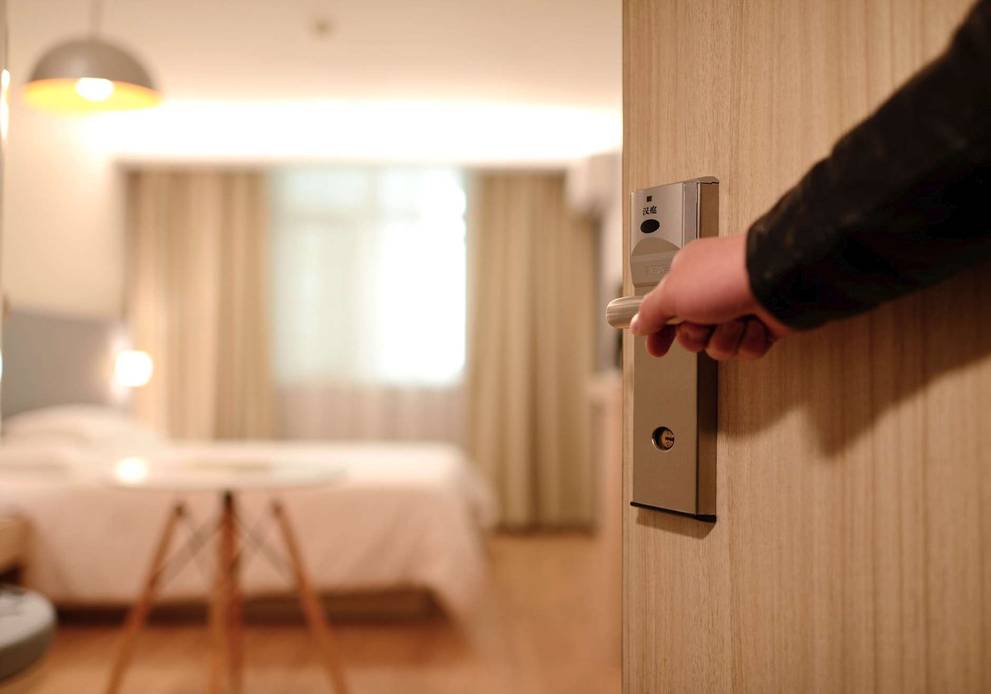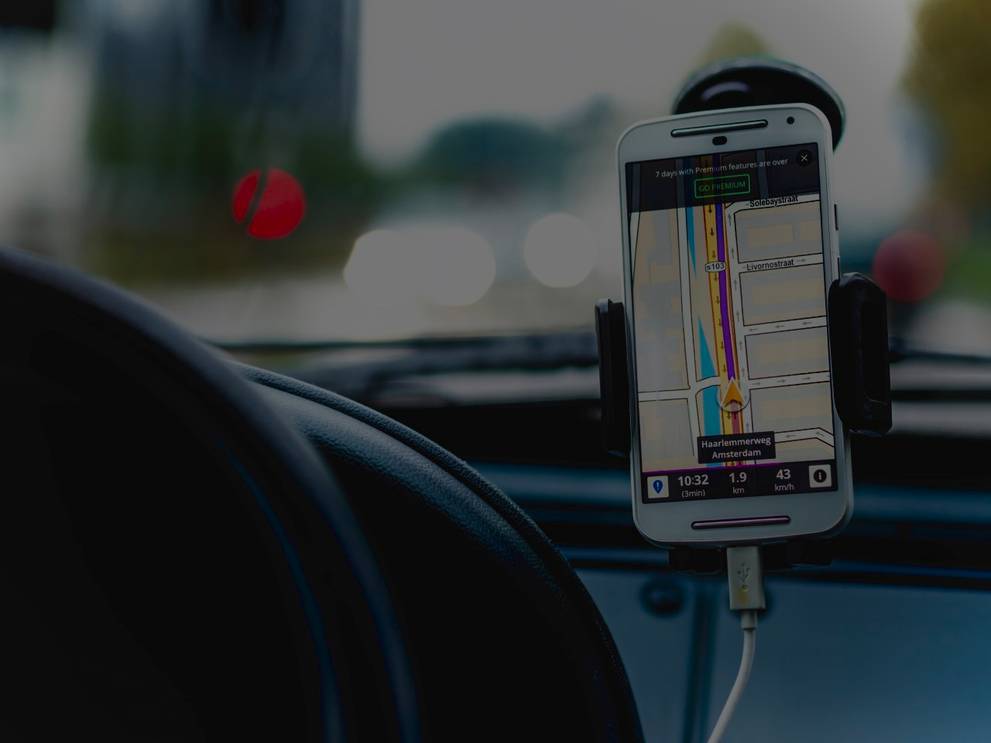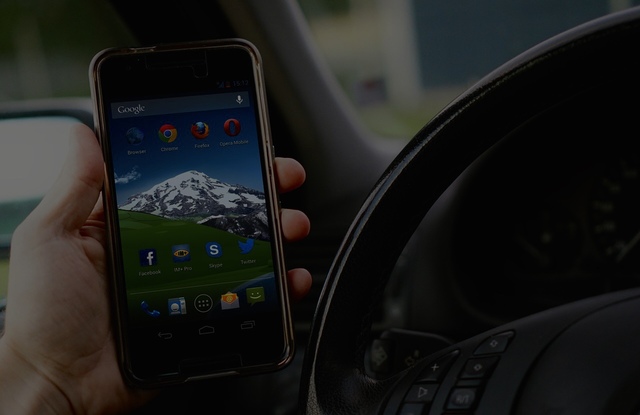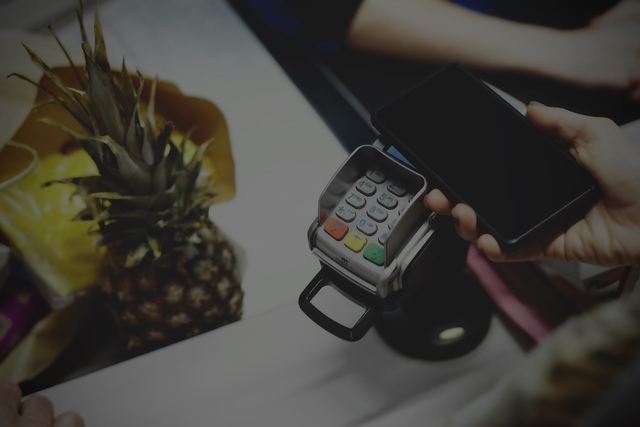Uber was launched as a beta version in 2010 that operated only in San-Francisco. Initially, the service only offered to book luxury black cars, and the price was 1.5 times higher than the usual taxi. Over the years, the company has revolutionized the car ridesharing world and reduced travel prices for passengers. Now Uber operates in 63 countries and makes more than $14 billion per year. In this article we are going to talk about how the company achieved such a huge success, and most importantly - how to create an app like Uber.
Why is Uber So Popular
Have you ever been charged so much by a taxi driver that it felt like you were being robbed? This was something many people have experienced when it was necessary to get from the airport to the city, especially if you were a tourist. Uber fixed this problem. It made getting a ride to anywhere you needed to go easier and cheaper. Thanks to Uber, you no longer have to worry about being taken advantage of, no longer have to battle with others for the same taxi on the street, and no longer need to look up a service number to call. Just a couple of clicks in the application - and the driver comes to you. Uber made travel more accessible and comfortable for passengers by introducing a single fare and calculation of the distance for the entire ride. Moreover, thanks to Uber, the number of drunk drivers has significantly decreased.
“Uber is a $3.5 billion lesson in building for how the world *should* work instead of optimizing for how the world *does* work.”
-Aaron Levie, American Entrepreneur
Uber focuses on customer preferences. You can choose any type of car and even order a non-smoking driver or someone who will be silent all the way. At the same time, Uber provides an opportunity to earn money for car owners. They can easily and quickly register in the system to become a taxi driver and make extra money.
Another significant advantage of this service is that it works 24/7, you can order a ride online at any time of the day or night. Moreover, the company provides clear requirements for drivers and cars. Their standards are aimed at providing comfort and protecting the environment.
Best Examples of Taxi Booking Apps
Taxi applications have made our lives much better. You do not need to search for a car on the street, find out the service number, communicate with the operator, spell out your address or look for the required sum in cash. A reliable application will determine your geolocation and offer online payment. You can also see which taxis are available near you. All this made taxi booking apps so popular.
Let's look at the most relevant applications for ordering a taxi, as well as their features. This is a list of your main competitors, which you can use in the future for market research.
Uber
Naturally, Uber comes first. It is currently available in 785 cities and continues to expand. Depending on the city, Uber charges you a different price. An average trip costs $1 per mile, but in some regions it may be $2.50. The company offers various services depending on the needs of the user and price: UberPool, UberX, UberGo, UberBlack. In 2014 Uber also launched food delivery.
Lyft
Another competitive application that was launched in 2012. Now it serves 300+ cities. The uniqueness of this application lies in its rating system, which allows the company to objectively evaluate drivers. Lyft terminates cooperation with all riders who have a low rating. On average, the trip is cheaper than with Uber and costs approximately $12.
Curb
The company has more than 50,000 cars and operates in 70 U.S. cities. In contrast to Uber, Curb offers a fixed price, which means the cost of the trip will not change depending on the traffic workload.
Grab
This application is available in Asia. It is worth considering that Asia occupies a significant share of the taxi services market. So, due to a large pool of customers, the company can offer a rather low price of about $5 per trip.
Gett
This app serves customers from the USA and Europe and is available in 100+ cities. A significant competitive advantage of Gett is the ability to book a trip 2 weeks in advance! The application also offers fixed rates, so you will not encounter price spikes.
Where to Start in Building a Taxi App
If your dream is to launch services like uber, let us help you with the theory and practice. To begin, consider the following steps that any startup or existing company should take to build a winning app and conquer the market. If you already have an active taxi business just move to point #3.
- Identify Business Goals
Just copying Uber is not a good idea. Your application should have its own characteristics, which favorably mark you from competitors. Therefore, first of all, think about what kind of services you want to offer. Perhaps the following ideas will appeal to you:
- bus order
- car or truck rental
- order transfer from the airport
- bike or scooter rental
- delivery by car
- employees transportation
- children, students transportation
- Do Market Research
Once you have decided on the main idea of your application, the next essential step is market analysis. You must study your competitors, understand what advanced services you can offer, and research potential customers. Decide in which region your application will work. According to statistics from Mordor Intelligence, Asia-Pacific is the leader in the taxi market and holds more than 70% of the global market. It is very important to understand who your application will be developed for, as this is the key to a successful marketing campaign. You should know everything about your potential clients, basic preferences, age, cultural features, geographic location, and so on. Given all these nuances during development, you can create a great product and successfully occupy your niche.
- Prepare a Specification
Having received market data, you need to start preparing specifications. It should describe the business processes of your products and functional features. Simply put, this is a document with a detailed description of how your application should work. Designers make payouts and developers build software based on the specification. Think about the mobile app. Your product should be compatible with the most popular platforms such as iOS and Android.
- Find a Reliable Development Team
An experienced team will help you realize all your ideas. Keep in mind that one person is not able to build a quality application. You will need a UX/UI designer, at least one software developer, a quality assurance specialist, a marketer, and a project manager. The modern market offers lots of outsourcing software development companies that form the necessary development team for customers, so you don’t have to worry about staff recruitment at all. The best way is to use the services of such companies, as this significantly saves you resources.
Our software development team has 12+ years of experience building reliable web and mobile apps. Need help with project estimation? Ask us for a free consultation.
Get a QuoteMandatory Features for Your Cab Booking App
In order to create a high-quality application, you must think in detail how it will work, and all functions should be useful for both passengers and drivers. Below we have compiled a list of the common features that a competitive application should have.
Functions for Passengers
Cab service must provide the following features for clients:
- Registration. Clients must be able to sign up in the system to get access to services like ordering, driver’s location tracking, rating, payments, etc. Registration is mandatory, as an app will safely store you card details and you will not have to insert them each time.
- Tracking. Clients should be able to see on the map where a driver is and also be able to set departure & arrival locations.
- Selecting a cab type. Passengers should be able to choose the class (economy, standard, comfort, business, delivery, etc.) of a car and its capacity (how many people can be transported).
- Set time. Passengers must be able to set a time for when a car must arrive at their location.
- Cost calculator. An app must calculate the final price of the trip depending on the fare, mileage, and additional wishes of the client (for example, service for transportation of animals).
- Automatic Payment. The application should enable users to choose an appropriate payment method. A client can be automatically charged when a driver accepts the order or when the journey is completed. Passengers must receive a receipt by email and be able to add several payment card options to the app. You also need to take care of those customers who will pay cash.
- Updating status. An app must update clients when drivers accept or decline rides.
- Ratings and feedback. It's good if clients can leave a review about drivers and add comments about driving style. This is a way to reward reliable drivers and learn who is not trustworthy.
- Booking history. Clients must be able to see their trip history.
- Additional services. It’s good if passengers can order additional services, like transferring animals, a non-smoking driver, extra baggage, meeting instructions at the airport/railway station (I’ll be the person with the sign, etc).
Functions for Drivers
Functionality for the drivers should include the following points:
- Registration. Drivers must be able to sign up for the system to have the ability to pick up orders and provide card details to receive their earnings.
- Car Check. In order to become a taxi driver in the application, riders must provide their personal data, including driver’s license, insurance information, and vehicle papers.
- Booking. The app must give the ability for a driver to accept a ride, for example, within 15 sec.
- Booking History. Drivers should be able to see the history of their rides for the day, week, month, year.
- Navigation with Google. The app must be integrated with google maps and navigator to lead drivers.
- Quality Control. One of the convenient ways to control the quality of the car and the services provided by drivers is a rating system. Based on the feedback of drivers, the application can ban passengers who have broken rules, such as causing destruction or safety risks to the vehicle and its occupants.
Functions for Passengers & Drivers
Features that must be available for all types of users include:
- Notifications. Both clients and drivers must receive push-notifications, emails, and SMS regarding trips, orders, and payments.
- Means of communication. Passengers and drivers must be able to contact each other by chat or call.
- Login with Social Networks. It’s good if an app similar to Uber can give all their users the ability to login via Facebook or email.
- Support service. Passengers and drivers must be able to contact the support team in case of any issues.
Admin Panel
We’ve mentioned what should be available to users, but your application should also have functionality for managing your business. The admin panel is what you can use to create marketing campaigns, manage a database, store orders and view their details, build a route manually, and lots of other features that may be important for you.
What Is the Tech Stack Needed to Build a Taxi Application
Let's first investigate basic concepts. Technology stack is the combination of various software products and programming languages needed to build desktop, web, or mobile apps. Any program has 2 general components: front-end (user-side) and back-end (server-side).
You are probably wondering why we are talking about all these terms. But the truth is that you really have to know such nuances if you want to successfully support and improve your app after the development phase is over.
The frontend is everything that a user can see and interact with, the app’s layout, buttons, colors, the text of the notification on screen, etc. In turn, the backend is everything that the user can’t see. Let’s go over a simple example. You have chosen the type of car, laid the route, and now you just have to click the 'Confirm' button. This button is the front-end, it sends a request to the server that you ordered a ride. A server (backend part) processes this request and sends the offer to drivers. After someone takes your order, the server will process this request again and send you a notification that you will see on the screen (this is again the frontend). Backend is a more complex part than frontend and includes server set up, database installation, and writing source code with a programming language. The beautiful appearance of your application depends on the front-end, and the backend affects how fast it will work.
Choosing the right technology stack is basically the task of software developers based on your business goals. However, for a general understanding, let's look at the technology stack that Uber uses.
- The frontend of the application is based on languages such as jQuery and React.
- Programming languages are Python and Java.
- Databases: MongoDB, MySQL, PostgreSQL, Redis.
- Server: Node.js, Nginx
- Mobile app development: Apache Thrift, Objective-C, Swift, Go.
An important decision that you must make is how the mobile application will be built. There are two main types of development: native and cross-platform. Native development implies that the application is created separately for iOS and Android using those programming languages that are suitable for each platform. In this case, you actually get two applications. Cross-platform development is when an application is built in such a way that it is compatible with both of the main mobile operating systems. Native development takes longer and is more expensive, but due to this, the application works more efficiently, quickly, and also has a higher level of protection against hacker attacks.
In addition, you also need to choose the payment gateways that will handle payments and sign a contract with them. The most popular are Adyen, Braintree, Paypal, Stripe, Peach.
How Long Does it Take to Develop a Taxi App like Uber
The exact development time depends on your specification and design complexity. But below we give the average calculation of the time based on only the basic functions that need to be implemented to make an app like uber. Let's look at the pivot table.
Passengers functionality
Server-side | iOS | Android | |
Registration & Profile | 32-40h | 40-48h | 32-48h |
Taxi Booking | 24-36h | 76-84h | 68-78h |
Fare Calculator | 20-28h | 16-20h | 16-20h |
Card Details | 20-24h | 32-36h | 28-34h |
Payments | 32-40h | - | - |
Map integration | 16-20h | 20-24h | 20-24h |
Detect user's location | 8-12h | 16-20h | 12-16h |
Set pickup location | 16-20h | 24-28h | 20-24h |
Driver Tracking | 32-40h | 40-48h | 36-40h |
Ride History | 24-28h | 40-44h | 32-40h |
Review & Rating | 16-24h | 24-32h | 24-32h |
Notifications | 16-20h | 20-24h | 20-24h |
Total | 256-322h | 348-408h | 308-380h |
Drivers functionality
Server-side | iOS | Android | |
Registration & Profile | 16-24h | 36-40h | 28-32h |
Reply to Booking Request | 28-32h | 40-48h | 38-44h |
Status Updates | 12-16h | 20-24h | 16-20h |
Ride History | 20-24h | 32-36h | 28-34h |
Notifications | 16-20h | 20-24h | 20-24h |
Total | 92-116h | 148-172h | 130-154h |
When calculating taxi app development time also consider admin panel functionality and integration with social networks, that will take approximately 80-92h. And note that it will take additional time to prepare the design and test the application.
Let’s sum up the process. App development includes several important steps:
- Relevant professionals should prepare designs for the mobile application. If you want your software to work with Android and iOS, then you will need to prepare layouts for each OS, maintaining the same style. Due to the features of these two operating systems, it is impossible to use one layout for two platforms.
- The next step is technical development. Software engineers will bring your design and specification to life.
- And the final stage is testing the product. In truth, the entire development process should be divided into iterations. After completing the planned iteration, QA engineers must test the tasks that the programmers completed and give a report. Any functionality that does not meet the specifications should be fixed. Thus, it turns out that testing occurs in parallel with development.
How Your Taxi Booking App Can Compete With Uber & Lyft
Despite the fact that Uber has 91 million monthly users and Lyft possesses 18.6 million, you can still compete with both companies. First of all, you need to explore all the nuances of the market in order to understand where exactly you can succeed. For example, Uber works only in 63 countries, so you still have the opportunity to occupy an undeveloped market. For instance, Uber doesn't operate in Cyprus, and this small island attracts about 4 million tourists annually.
Do something that has not yet been done or offered by others or occupy a niche that has not yet been mastered. Current global trends are aimed at protecting the environment. So a very profitable niche that you can still occupy is an eco-friendly taxi app. Which means that your drivers will use cars with minimal emissions.
You can also develop a unique discount program, which is not offered by Uber or similar applications. Several independent studies show that 78% of buyers are more likely to use a service if the retailer offers discounts.
However, you must attract not only passengers but also drivers. These are interconnected users, so you must take care of their convenience. A good solution would be to introduce insurance programs to protect drivers. Also think about giving them the opportunity to earn more during peak hours or a simple procedure for crediting funds to their accounts.
Taxi App Development Cost: What Does it Depend On
The final price to build a taxi service app depends on various factors, such as the complexity and duration of the project, the number of people in the team, the hourly rate, etc. Most companies charge a fee based on the number of hours spent on development. So here is an approximate rate in different regions:
- North America — $60-250 per hour
- Western Europe — $40-150 per hour
- Eastern Europe — $25-100 per hour
- South America — $15-50 per hour
- Asia — $5-80 per hour
Note that the initial development of the Uber application cost several million dollars, and the company received contributions from 9 different investors. But, over 10 years, the IT industry has developed significantly, and now there are lots of excellent developers and reliable companies that offer these services at a reasonable price.
Want to Get an Estimate Right Now?
As you can see, the duration and cost of development depends largely on the requirements of the client. But you don’t need millions of dollars to release a successful application. In fact, all you need is an experienced development team that is inspired just like you.
At KeyUA we offer the best prices and conditions for cooperation. Since 2008 we have been developing quality products to meet business needs. If you want an accurate estimation of your project, contact our team. We will provide you with a free consultation and give you workable tech tips.
Get a Quote







 Unit 1505 124 City Road, London, United Kingdom, EC1V 2NX
Unit 1505 124 City Road, London, United Kingdom, EC1V 2NX

Comments
Leave a comment